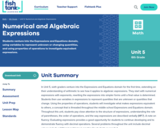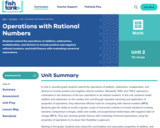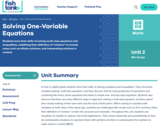
In this lesson on multiplying by nine, students learn about equal groups, explore word problems, and apply their learning to a real-world scenario.
- Subject:
- Mathematics
- Material Type:
- Interactive
- Lesson
- Provider:
- Nearpod
- Date Added:
- 08/07/2023

In this lesson on multiplying by nine, students learn about equal groups, explore word problems, and apply their learning to a real-world scenario.

In this lesson on multiplying by seven, students learn about equal groups, explore word problems, and apply their learning to a real-world scenario.

In this lesson on multiplying by six, students learn about equal groups, explore word problems, and apply their learning to a real-world scenario.

In this math activity, students will practice and strengthen their ability to express a sum using the distributive property by completing example problems with a Draw It activity.

In this lesson, students will learn how to solve linear equations in one variable including equations with one solution, no solution, and infinite solutions.

Students manipulate expressions into different equivalent forms as they expand, factor, add, and subtract numerical and algebraic expressions and face authentic real-world, multi-step problems.

Students venture into the Expressions and Equations domain, using variables to represent unknown or changing quantities, and using properties of operations to investigate equivalent expressions.

Students extend the operations of addition, subtraction, multiplication, and division to include positive and negative rational numbers, and build fluency with evaluating numerical expressions.

This Purplemath tutorial shows three methods for multiplying polynomials: distribution, FOIL, and columns.

Use the distributive property to solve for multi-step linear inequalities. Check learning with a short quiz. [10:15]

Students hone their skills of solving multi-step equations and inequalities, redefining their definition of "solution" to include cases such as infinite solutions, and interpreting solutions in context.

Students learn about the special product rule for Product of the Sum and Difference of Two Terms, which is useful for understanding polynomial identities. Includes short multiple-choice quiz. [3:30]

Linear equations which can be solved with a single operation are called one-step linear equations. In this video, you will see how to solve one-step linear equations represented in diagrams and in equation form. [2:15]

When you see equations in the form of a(x+b) =c, you can remove the bracket and rewrite the equations into ax+ab =c using the distributive property. In this video, you will see how to make use of this property to help solve linear equations. [1:27]

You will learn how to solve multi-step linear inequalities in this lesson. Besides typical math questions, you are going to see word problems related to multi-step linear inequalities and money. [8:15]

Find a quick, concise explanation of the Arithmetic Properties-Associative, Commutative, and Distributive Properties. Examples are given for each property to help you understand how to recognize and apply each property.

Find a quick, concise explanation of the Distributive Property. Several examples are given to help you understand how to apply and use the Distributive Property.

Watch this tutorial to see the uses of the distributive property including helping to add and multiply numbers. [5:27]

This tutorial takes you through the process of multiplying two complex numbers together using the FOIL method. [2:45]

Review how to simplify an algebraic expression in order to prepare for the SAT. Follow this tutorial for practice putting an expression in simplest form. [2:39]